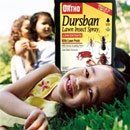 We had a pretty typical Christmas yesterday at the McAsey house. We got up opened gifts, fixed some food to take to Grandma's house, then spent most of the afternoon at Grandma's, then came home to take care of the animals and settled down to relax. Well for me that is when the typical Christmas day changed...
We had a pretty typical Christmas yesterday at the McAsey house. We got up opened gifts, fixed some food to take to Grandma's house, then spent most of the afternoon at Grandma's, then came home to take care of the animals and settled down to relax. Well for me that is when the typical Christmas day changed...It was the movie that we turned on that is the reason for my post today. If you have never seen the movie "The day after Tomorrow" I suggest if you care anything at all what the earth will be like for future generations, you take the time to watch the movie.
It's one of those future-i-stick (I'm not sure if that is a word, but that's what I would call it) movies. Basically the story is about what might happen to the earth if we don't take care of it and reduce the ozone emissions. In the movie the emissions change the weather patterns on earth, there is a big flood and then a terrible storm that makes everything resemble the ice age. There is a panic for every on to head south. etc...
Anyway after seeing that movie it just made me realize, that some of the changes I made in my life style several years ago wasn't only necesary for me and everyone living on earth today, but also for our future generations. I know for me I work really hard to see that my kids, future grand kids, and many generations after that can live and enjoy a earth that isn't polluted, and storms like what I saw in the movie doesn't actually happen to us.
Originally I was forced into changing my lifestyle to a chemically free more natural lifestyle... but as I look back on what happened to me I'm so thankful that I was forced into a healthier lifestyle. Read more here.
At Grandma's yesterday, there was this wonderful plate of mixed nuts that looked so good.. well as grandma put them down I naturally picked up a couple and started eating... then she stared was telling me what she had coated them with. Everything she said sounded OK until she mentioned something called "Splenda" (not sure I spelled that right) well immedatly I stopped chewing wondering if that splenda stuff had nutrisweet in it... man you don't think about going to grandma's house and worrying about what you put in your mouth!
My sister who saw my face said oh don't worry it's just frutose (the natural form of sugar). Man I hate those tech-no-bable names! Why don't they just say natural form of sugar!
As most of you know who read this blog very often, I have a strong passion for living in a chemically-free environment. That is one of the reasons I'm so passionate about the Barefoot Secret Company I market products for... not only do they make their products " In Harmnony with Nature" they are considered a climate Neutral Company. That means what ever they take from the environment they put back into it. My understanding of this is what ever the emit into the atmosphere they turn around and plant enough trees or plants to offset those emissions. I believe they were one of the first companies to do this.
Another milestone for the Barefoot Secret Company is about happen also... come January 1st they will be celebrating 50 years in business. With all the scams on the internet these days I'm so proud to be associated with a company that is the largest longest operating natural supplement company in the USA!
If you stop to think about the Barefoot Secret Company it's amazing they could be in the top 10 of all network marketing companies and be only in 5 countries.. most of the others in the top 10 list are global companies! That is one of the reason's for my passion with this company.. we have so much to share with other parts of the world, the owner Roger Barnett is stratgizing for growth to 50 countries in the next 10 years.
After watching the movie last night I figure that is what has to happen, because what good does it do if everyone in the USA learns to protect the environment the way I have through these products and on the other side of the world they are doing nothing.



